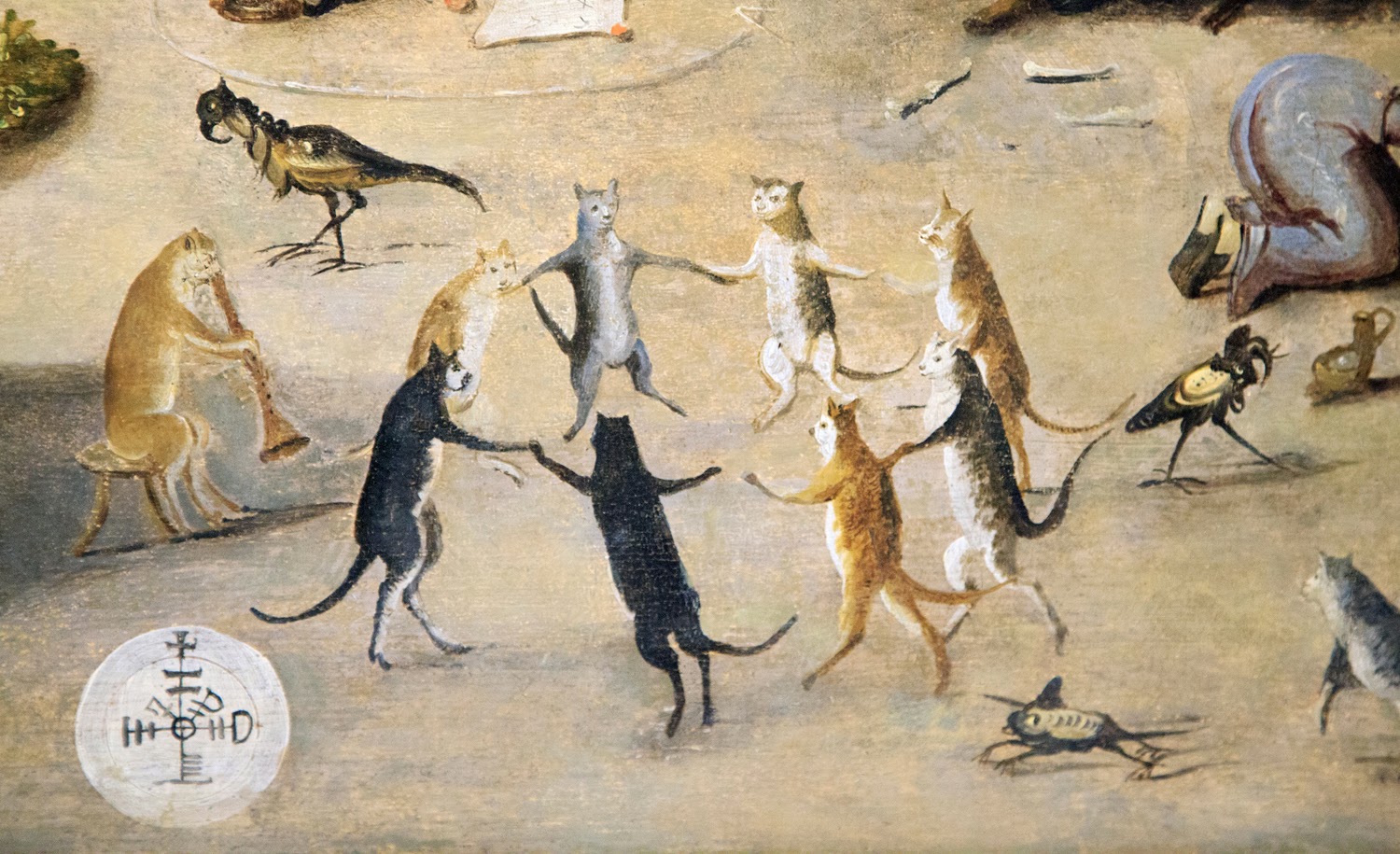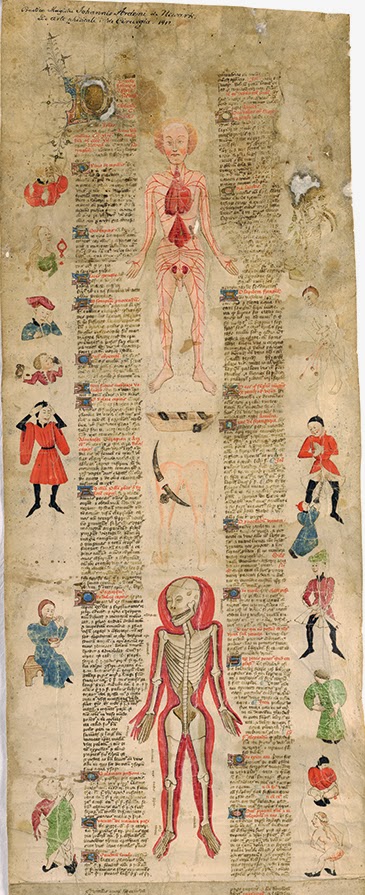




Our friend Felipe Trigo Redondo (aka "Kaiser Noir")--historian, tour guide,
co-organizer of the Barcelona Congress of Curious Peoples and director of
Kriminal Kabarett--just sent in the following guest post about, in his own words, "the most spectacular piece of funerary art from all the Spanish Baroque era: the Pantheon for the Counts of Buenavista!" All photos by Angel Trullen; hope you enjoy!
The Pantheon for the Counts of Buenavista in Malga
By Felipe Trigo Redondo
On a journey to Andalusia, the extreme south of the Iberian peninsula, the traveler will always be surrounded by the echoes of an astounding past, between the brightness of transcendental moments for the whole humanity (the superb arts patronized by the Arabian princes and the strength of the poets from the 20th century) and the darkness of terrible cataclysms, such as the medieval wars, the coming of the Inquisition and the "last Crusade": the Spanish Civil War.
Malaga, founded by the Phoenicians and one of the oldest cities in the Mediterranean, is the paradigm of this tragic sense of life in this land praised during Antiquity as the end of the world, the country beyond the Pillars of Hercules. Indeed, the death is omnipresent in the religious beliefs and thoughts of the Andalusian people. We are going to see in depth how these people expressed this collective state of mind during the end of the 17th century, introducing the most spectacular piece of funerary art from all the Spanish Baroque era: the Pantheon for the Counts of Buenavista.
Before the catastrophic fall of Malaga in 1487 (the Christians enslaved all the Muslim inhabitants in the city) the king Fernando V settled his military quarters outside the city walls. After the defeat of the Muslims, this place was consecrated to Our Lady of Victory ("Nuestra Señora de la Victoria") and soon a sanctuary was built to commemorate this day. Malaga, would never recover its former splendor as the main port for the kingdom of Granada. Towards the middle of the 17th century, the disastrous wars for the Spanish monarchy, the economic crisis, plagues and famines devastated the country. This dramatic situation shaped the spirit of pessimism that influenced arts and literature during this time, which was paradoxically, the Golden Age for the Spanish culture.
The church of "Nuestra Señora de la Victoria," built in the Gothic style, was almost ruined in 1680. However, this religious complex would achieve its definitive glory due to the intervention of Juan Francisco Guerrero y Chavarino (1660-1699) a banker from a family of merchants. He supported the Spanish monarchy with his own funds and, for this reason, was appointed governor of Antequera and then ennobled and named count of Buenavista. With an immense fortune, he settled in Malaga to live in a luxurious palace which is today the Pablo Picasso Museum.
As a new aristocrat, he joined the tradition of the most powerful men in Andalucia, being the patron of the sanctuary of "Nuestra Señora de la Victoria," restoring the temple and building his extraordinary museum under the apotheosis of the Virgin. Following the structure of a tower, the count placed his tomb in the lowest level, an oratory in the middle and the sacred chamber for the Virgin on the top, as the church's main altar. This work forms a whole masterpiece as a total allegory of death and resurrection. It is also a political manifesto as a victory against the Devil and the enemies for the Catholic Church.
The pantheon itself is an esoteric treatise carved in stone. The vault is sustained by two massive columns, the symbolic connection between the afterlife and the Paradise. The decoration is extremely complex. The figures in plaster were executed under the direction of Felipe de Unzurrunzaga (1654-1740), the most important Baroque architect in the city of Malaga. He began this work in 1689, under the influence of the macabre art from the funerary chapels in Messina and Palermo, two cities already visited by him and then under Spanish control. A constellation of skulls and bones shines in the black ceiling, while a grotesque Spanish version of the European "Totentanz", the Dance of Death, occupies the walls. All the topics on death in the literature of the Spanish Golden age (very usual for writers as Quevedo, Calderón de la Barca, Gracián) are encircling the tombs for the count and his wife. We also can see the Roman "Parcae,” female personifications of Destiny, often called the Fates in English. The skeletons are holding mirrors to reflect the mortality and the last fate of humankind.
In the words of Juan Temboury (an historian who studied in depth this church) the pantheon for the counts of Buenavista is the definitive depiction of the three states or ages which every human being should follow, from penitence and abstinence to the absolute vision of God. The sumptuous figures in the tombs, dressed in the lavish courtesan fashion, are portraits of the young counts praying in the darkness. This is a perfect example of two literary topics: "Tempus Fugit" and "Carpe Diem" because, despite his economic power and splendorous style of life, the count died quite young, just after the completion of his mausoleum. A gilded cross was erected between the two aristocrats, symbolizing the path to salvation through the Christian alchemy, from the absolute darkness to the divine gold.
Leaving the tenebrous vault, the visitor takes the staircase to the oratory (a chapel of severe austerity) and then the Virgin’s sacred chamber, where a Gothic German sculpture of Holy Mary presides the scene. Here, the sacred trip is completed for the devout souls of the count and his wife, ascending to the ecstasy in the contemplation of God’s Mother. The decoration is an absolute catharsis in baroque style, with elements from botanic and heraldic inspiration (the imperial coat of the Spanish monarchy is also included). This is an extraordinary ensemble which has been identified as the Virgin’s garden in Heaven. The mirrors are also present, but this time reflecting the light of immortality, in an explosion of the last possibilities of baroque art, a genuine Spanish style called “churrigueresco.” This triumph over Death and the demonic forces of sin is a parallel version of Saint James enthroned in the cathedral of Santiago de Compostela, also in the same style “churrigueresco.”
Death was always present in the collective conscience of the Andalusian people. The pantheon for the counts of Buenavista is the last jewel of Spanish funerary baroque, preceded by the morbid paintings by Claudio Coello in the “Hospital de la Caridad” in Sevilla, also a religious foundation sustained by a wealthy merchant. Today, the pantheon is being discovered by curious travelers from around the world and they even have the possibility to visit the crypt during the night by candlelight, as did the count himself, contemplatin the realms of death. This place has been chosen as one of the marvels in the city of Malaga by art connoisseurs and photographers, as Malaga is reaching more and more notoriety for its cultural activity and its iconic museums and collections.

































